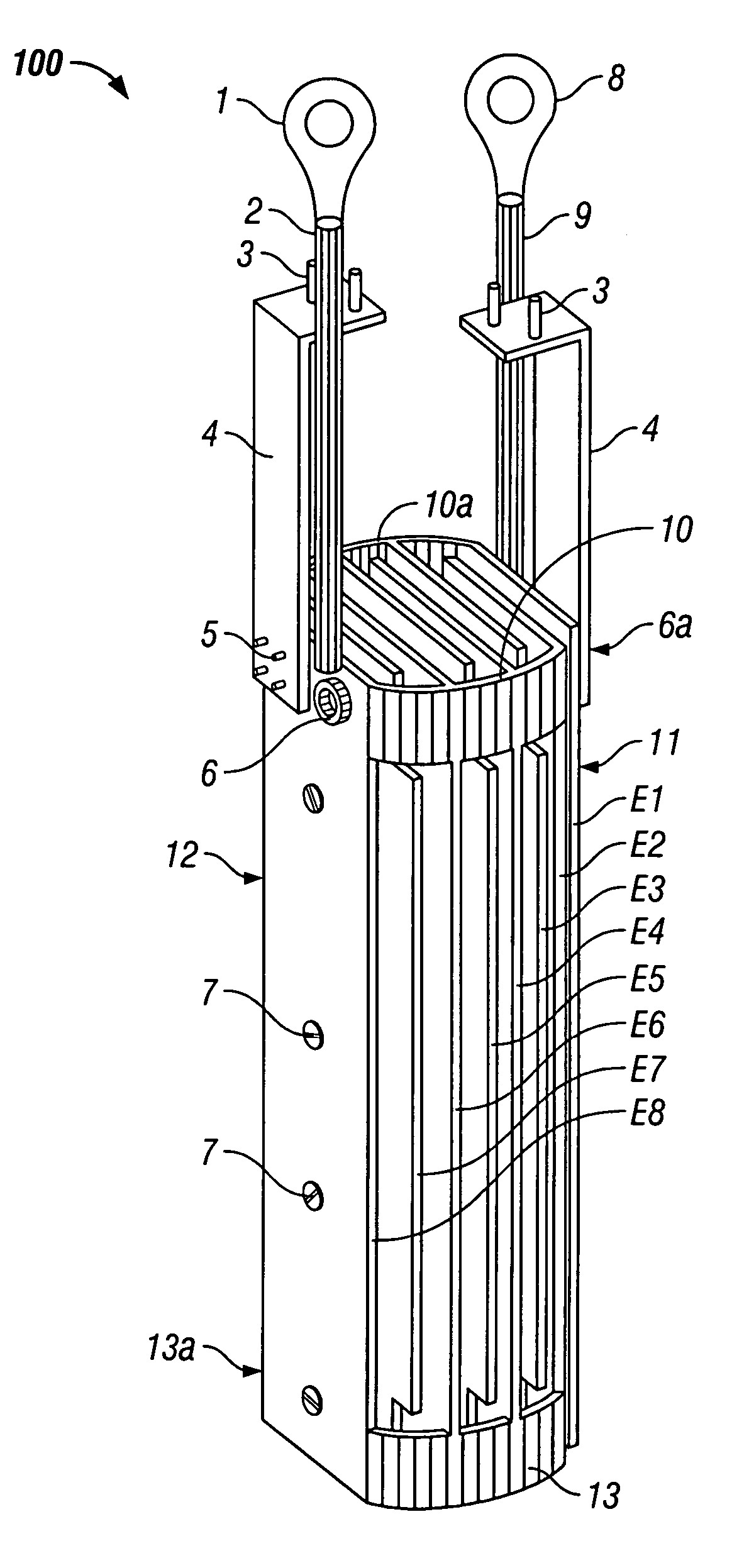Cells and electrodes for electrocoagulation treatment of wastewater
a technology of electrocoagulation treatment and cells, applied in the direction of manufacturing tools, centrifuges, separation processes, etc., can solve the problems of reducing the available area for electrocoagulation treatment, limiting the number of plates, and reducing the success of electrolysis treatment of prior art, so as to improve the operability of hydraulic facilities
- Summary
- Abstract
- Description
- Claims
- Application Information
AI Technical Summary
Benefits of technology
Problems solved by technology
Method used
Image
Examples
Embodiment Construction
[0020]This invention is mainly based on a set of electrode plates 11 and 12 inserted into a sleeve 18 made of a non-conductive material, which is usually a plastic material and preferably PVC. Therefore, the sets of electrodes 11 and 12 have plates at the center of the set being wider than the plates further from the center. The sets of electrode plates 11 and 12 are typically made of conductive metals such as iron and aluminum. In water treatments by electrocoagulation various metals are used, such as stainless steel, copper, lead, zinc, and titanium, among others. Metal alloys, as well as other conductive materials, such as coal and graphite, may also be used in this invention.
[0021]FIG. 1 shows the interior of an exemplary electrocoagulation cell 100, being about 11 inches high and 3 inches wide, wherein the shoe for electric connection is a positive pole 1, which is joined to a positive heavy duty cable 2, same which is joined to a terminal 6. On the other side of the electrocoa...
PUM
| Property | Measurement | Unit |
|---|---|---|
| angle | aaaaa | aaaaa |
| angle | aaaaa | aaaaa |
| tilt angle | aaaaa | aaaaa |
Abstract
Description
Claims
Application Information
 Login to View More
Login to View More - R&D
- Intellectual Property
- Life Sciences
- Materials
- Tech Scout
- Unparalleled Data Quality
- Higher Quality Content
- 60% Fewer Hallucinations
Browse by: Latest US Patents, China's latest patents, Technical Efficacy Thesaurus, Application Domain, Technology Topic, Popular Technical Reports.
© 2025 PatSnap. All rights reserved.Legal|Privacy policy|Modern Slavery Act Transparency Statement|Sitemap|About US| Contact US: help@patsnap.com



